Review| Beauty and the Beast (2017)
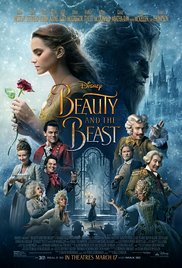 When I was watching Disney’s new Beauty and the Beast, one word kept springing to mind: spectacle. The scale of a Broadway musical meets the sheer wonder of the most lavish of Disney spectacles. The sense of magic and wonderment that permeates the film is quintessentially Disney, and as for the film’s Broadway aspects, it was both the extremely high production value (on par with films like Phantom of the Opera or Les Mis) and the sound–the huge beautiful sound that comes from a full orchestra and an enormous chorus. While any attempt to adapt or remake Disney’s near-perfect 1991 animated Beauty and the Beast might seem needless or even counterproductive, the latest Disney live-action adaptation breathes new life into the fairytale. Amidst all the spectacle (there’s that word again), the characters seem more human than ever, and the message of the story, far from getting lost amidst the pageantry, is stronger than ever.
When I was watching Disney’s new Beauty and the Beast, one word kept springing to mind: spectacle. The scale of a Broadway musical meets the sheer wonder of the most lavish of Disney spectacles. The sense of magic and wonderment that permeates the film is quintessentially Disney, and as for the film’s Broadway aspects, it was both the extremely high production value (on par with films like Phantom of the Opera or Les Mis) and the sound–the huge beautiful sound that comes from a full orchestra and an enormous chorus. While any attempt to adapt or remake Disney’s near-perfect 1991 animated Beauty and the Beast might seem needless or even counterproductive, the latest Disney live-action adaptation breathes new life into the fairytale. Amidst all the spectacle (there’s that word again), the characters seem more human than ever, and the message of the story, far from getting lost amidst the pageantry, is stronger than ever.
Beauty and the Beast is, obviously, a fairytale, but the filmmakers added plenty of details to ground it in reality–as though the “once upon a time” was an actual date in history. The film is bursting with rich and lavish detail, drawing from the Rococo style and fashion of the time in which the story is set (which is the fairytale version of the 18th century–between when the Sun King Louis XIV ruled France and before Marie Antoinette was escorted to the Place de la Concorde). The architecture and the fashion both place the audience firmly in that specific era. There are also multiple conversations and references to Shakespeare* (which I always enjoy); once again, grounding us in a time and place.
The characters also feel quite real and very human. Belle’s character is more rounded out–more fully realized. Not only is Belle an avid reader and independent thinker (in a town where not just women, but people in general, don’t seem to have much use for thinking)–she is a tinkerer, an inventor, and a would-be adventuress. Additionally, Emma Watson brings her own relaxed sense of self to the role; she portrays Belle as natural and sure of herself without being haughty. Luke Evans brings the perfect mix of arrogance, charm, and bull-headed stupidity to the character of Gaston. Dan Stevens balances the added complexities of the Beast’s character, and shows him as both a monster and a man.
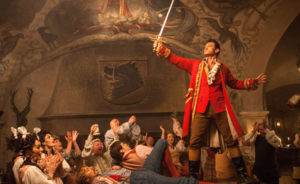 I’ll spare readers a synopsis of the story, but I will say that in this version, the stakes are much higher. If the Beast does not manage to break the enchantress’s spell, he will not be the only one to suffer. His entire household–all those who were transformed from human beings into candelabras and clocks–will be doomed as well. These enchanted anthropomorphic household items are becoming less and less human as the all-important rose loses its petals. Once the last petal falls, not only will the Beast remain a beast forever, but all of the members of his loveable household staff will become nothing more than old furniture and knick-knacks, wooden to the core. Personally, their plight made me even more emotionally invested in the outcome of the story. Additionally, the extravagantly beautiful castle is in decay, slowly crumbling under the enchantress’s spell. It’s as if the castle is a living thing, and it too is slowly dying.
I’ll spare readers a synopsis of the story, but I will say that in this version, the stakes are much higher. If the Beast does not manage to break the enchantress’s spell, he will not be the only one to suffer. His entire household–all those who were transformed from human beings into candelabras and clocks–will be doomed as well. These enchanted anthropomorphic household items are becoming less and less human as the all-important rose loses its petals. Once the last petal falls, not only will the Beast remain a beast forever, but all of the members of his loveable household staff will become nothing more than old furniture and knick-knacks, wooden to the core. Personally, their plight made me even more emotionally invested in the outcome of the story. Additionally, the extravagantly beautiful castle is in decay, slowly crumbling under the enchantress’s spell. It’s as if the castle is a living thing, and it too is slowly dying.
Although the film is a shade or two darker than its predecessor, there are plenty of clever jokes–the quick-witted banter between Lumiere and Cogsworth flies back and forth so fast that one has to pay attention so as to not miss it. More importantly, the musical numbers do not disappoint. The opening song, Belle, brings the whole giant chorus together in the village square and powerfully introduces us to Belle’s world. The tavern scene with Gaston! is just pure fun–Josh Gad is adorably funny and Luke Evans gives a great vocal performance! Be Our Guest is a stunning and intricately choreographed display of light, color, and culinary VFX (there’s that Disney spectacle thing again). Personally, my favorite musical number was the Beast’s/Dan Stevens’s solo, Evermore–which he sings as Belle is riding away from the castle to help her father. I was so impressed by his powerful and moving vocal performance that I later looked it up to be sure it was actually him singing. It was.
Although I dearly love the Disney animated film, and have since the first time I watched it as a kid, I’ll admit I never really got the point of this particular fairy tale. Don’t judge by appearances? Don’t be afraid to be yourself when you don’t fit in? Don’t pluck roses from a stranger’s garden? None of that feels very satisfying. But as I watched the new film, it hit me: redemption. Maybe it was this film’s greater focus on the Beast’s character and his past; maybe it was the added depth to the story; or maybe I just needed to see the tale with fresh eyes. Whatever the reason, the familiar and yet wonderful theme came through loud and clear: redemption–when it seems all hope is lost. The Beast was doomed forever until Belle loved him, and he loved her. Is the story of redemption the “tale as old as time” the song mentions? I’d like to think so.
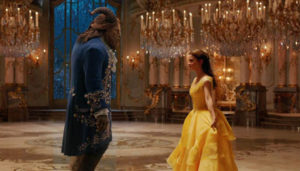 Lastly, I’d like to call some Oscar nominations: Production Designer Sarah Greenwood for Achievement in Art Direction, and Jacqueline Durran for Achievement in Costume Design. The two have teamed up a few times with director Joe Wright (Pride and Prejudice, Atonement); both women have been nominated before; and Durran won the Oscar for her work on Anna Karenina (2012, also directed by Joe Wright). I’m hoping the fifth time will be the charm for Sarah Greenwood (I’m a fan).
Lastly, I’d like to call some Oscar nominations: Production Designer Sarah Greenwood for Achievement in Art Direction, and Jacqueline Durran for Achievement in Costume Design. The two have teamed up a few times with director Joe Wright (Pride and Prejudice, Atonement); both women have been nominated before; and Durran won the Oscar for her work on Anna Karenina (2012, also directed by Joe Wright). I’m hoping the fifth time will be the charm for Sarah Greenwood (I’m a fan).
I know there will be plenty of people who have a hard time enjoying this new Beauty and the Beast because the animated classic is too firmly burned into their brains, and that’s okay. The beauty of this film does nothing to dim the perfection of its predecessor. It’s not better–just different and wholly new. And personally, I loved it.
*Here’s a little trivia for you: there is actually a Shakespeare quote in one of the original songs–ironically, one that Gaston sings. The line “screw your courage to the sticking-place,” in the song “Kill the Beast,” is a line from Macbeth (Act I, scene vii). I find it funny because I’m certain that Gaston has never read a word of Shakespeare–I’m not entirely certain he can read at all.


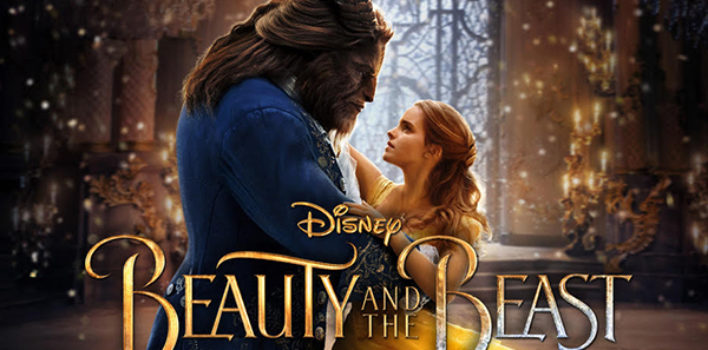
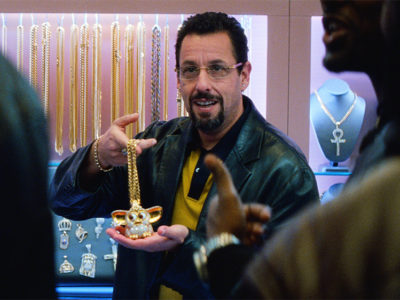
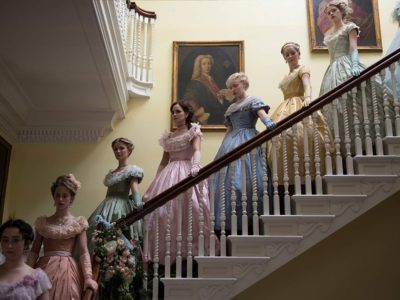
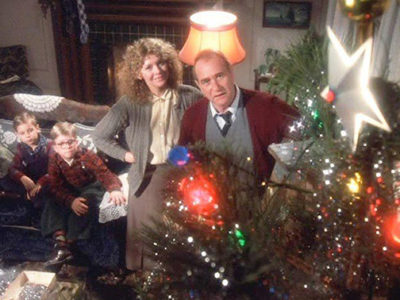


Pingback: #130 – Beauty and the Beast and Remakes, Redemption, and Realizations | Reel World Theology